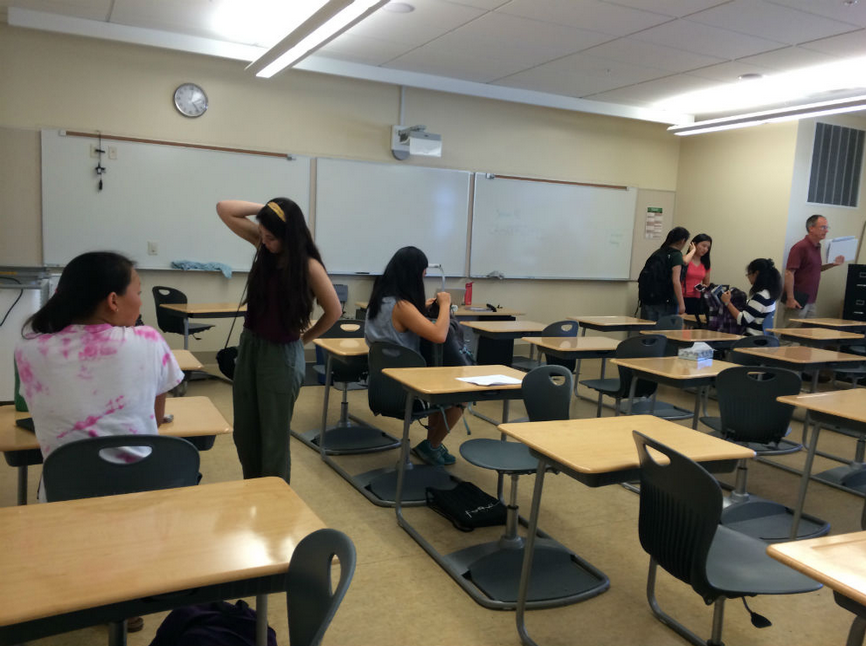
The Palo Alto High School Administration aims to increase student attendance for the state-standardized Smarter Balanced test that juniors will take on Tuesday and Wednesday at Paly.
Last year, Principal Kim Diorio expressed disappointment in the low turnout rate.
“Our participation rate was expected to be somewhere around 50 percent,” Diorio said last year. “We were hoping for a larger turnout, but we certainly understand that parents and students have a right to opt out of these kinds of tests. We’re seeing a trend across the nation of parents and students exercising that right.”
According to California Education Code §60615, parents are allowed to let their children opt out of California standardized tests, such as the Smarter Balanced test, if the school’s main office receives a handwritten note of excuse from parents.
The goal of the Smarter Balanced Test is to measure the strength of a school’s curriculum, according Diorio. In a recent email sent to juniors and their parents, Diorio encouraged students to take the test.
“While the results of the test will not be included on your transcript and will not be used in the college admission process, the results will be used to assess the quality of our school and its programs,” Diorio said.
There are several ramifications of a low participation rate, according to Diorio.
“In order to maintain our excellent rankings and strong reputation, both locally and nationally, it’s important that we reach a 95 percent participation rate,” Diorio said.
In addition to impacting the school’s reputation, the tests can also help students, according to Diorio.
“The results from the Smarter Balance tests may be used to satisfy eligibility requirements for the Gold State Seal Merit Diploma, State Seal of Biliteracy and California State University’s Early Assessment Program,” Diorio said.
Junior Michelle Leong is opting out of the test because she feels that it would be a waste of time.
“I do not want to take the Smarter Balanced test because I don’t want to be at school for two days taking a test that seems irrelevant and not worth my time,” Leong said.
Senior Joseph Kao, who took the test last year, opted out after the first section of the exam.
“There was a section where they gave us two hours to finish a total of five questions, so it was kind of a waste of time,” Kao said. “It was also a stressful period during junior year and I had a lot of work to do so I just decided to opt out. I knew a lot of people who were against the Common Core as well so that gave a different perspective on the whole testing situation.”
However, some students are still taking the test because it is a low-stakes assessment for them.
“I feel bad for opting out of a test that could provide valuable information for future students, especially since I have a younger sibling,” junior Alan Huang said. “It’s actually not that much time compared to how much time I waste usually and I don’t have much homework due after AP [Advanced Placement] testing anyways.”

